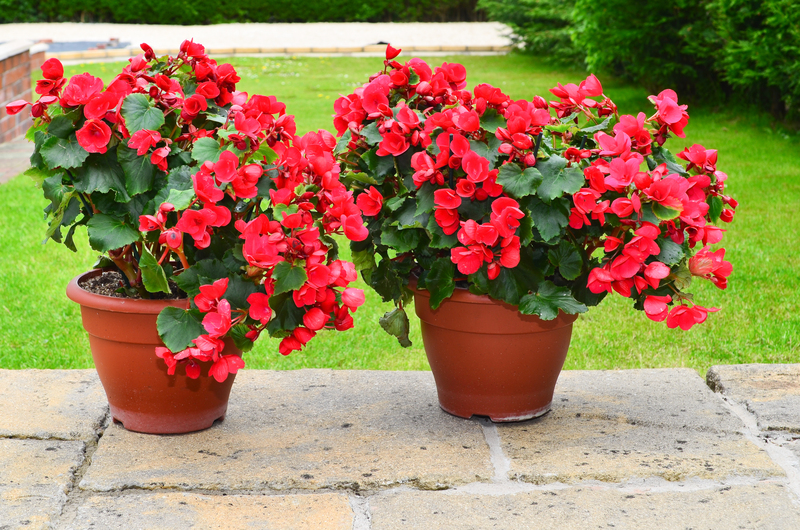Enduring Garden Tips for Withstanding Severe Weather Conditions
Posted on 11/06/2025
Enduring Garden Tips for Withstanding Severe Weather Conditions
Gardening presents a delightful connection with nature, but it also brings challenges, especially when hostile weather approaches. From torrential rain to biting frosts and relentless droughts, knowing how to make your garden resilient is paramount. If you want to develop a thriving, beautiful, and enduring garden that can withstand severe weather conditions, this comprehensive article will equip you with penetrating insights and actionable tips.
Understanding the Impact of Severe Weather on Gardens
Weather extremes are becoming more common. Hurricanes, heatwaves, floods, winds, and extreme cold pose threats to both new and established gardens. Plants can be stunted, uprooted, or killed. However, with the right planning and techniques, you can cultivate a weather-resistant garden that not only survives but flourishes regardless of the elements.
Common Weather Hazards for Gardens
- Heavy Rain and Flooding: Causes root rot, soil erosion, and nutrient leaching.
- Drought: Stresses or kills plants not suited for low water.
- High Winds: Can break stems, uproot plants, and dry out the soil.
- Frost and Snow: Cause cellular damage and can kill tender plants.
- Hail: Damages leaves, stems, and fruits.

Proactive Garden Planning for Severe Weather Resistance
Success begins with thoughtful garden planning. Implement these fundamental strategies to build a resilient garden foundation:
1. Choose the Right Site and Layout
- Elevation Matters: Higher ground reduces risk of waterlogging but can be prone to wind.
- Avoid Frost Pockets: Cold air settles in low-lying areas. Plant tender species on slopes or raised beds.
- Windbreaks: Utilize walls, hedges, or fencing to shield against strong gales.
— Proper orientation and planning are key first steps to developing a tough, enduring garden that will stand up to harsh weather events.
2. Select Weather-Resistant Plant Varieties
Not all plants are created equal—some are specifically bred for weather resistance. Investigate varieties that are:
- Drought-tolerant: Lavender, sedum, yucca, rosemary, and agastache.
- Flood-resistant: Daylilies, Iris, Willow, and Swamp milkweed.
- Wind-hardy: Ornamental grasses, conifers, elderberry, and hawthorn.
- Cold hardy: Hostas, peonies, hellebores, Siberian iris.
Native plants are often the most enduring option, as they have adapted to handle your region's specific weather conditions over centuries.
3. Improve Soil for Weather Endurance
The secret to a strong, weatherproof garden often lies beneath your feet. Soil health determines how well your garden can face drought, flood, or frost. To bolster soil:
- Add Organic Matter: Regularly mix in compost or well-rotted manure to improve drainage, structure, and nutrient retention.
- Mulch for Protection: Apply a thick layer (2-4 inches) of mulch to insulate roots, retain moisture, and reduce erosion from heavy rain.
- Test and Amend: Use soil tests to check pH and nutrient levels, amending as necessary for the healthiest root growth.
Building Wind, Rain, and Drought-Resistant Garden Structures
Physical barriers and smart engineering can dramatically increase your garden's endurance to severe weather.
1. Use Raised Beds
- Improved Drainage: Raised beds drain faster after rain, preventing waterlogging and root rot.
- Soil Control: You can add high-quality soil and adjust amendments that promote health and resilience.
- Ease of Protection: Raised beds are easier to cover with tarps, frost blankets, or row covers when hail or frost is forecast.
2. Strategic Planting and Spacing
- Staggered Rows: Plant in staggered, rather than straight rows, to reduce wind tunnel effects.
- Companion Planting: Mix strong, upright plants with more delicate ones for mutual wind protection.
- Group Plantings: Cluster plants with similar water and wind resistance together for microclimate advantages.
3. Utilize Protective Barriers
- Install Windbreaks: Tall grasses, dense hedging (like privet or boxwood), slatted fences, or even temporary panels can reduce wind damage by up to 50%.
- Use Cloches and Row Covers: Individual cloches or floating row covers safeguard tender seedlings from cold snaps, hail, or intense sun and wind.
4. Ensure Good Drainage Solutions
- Create Swales: Channels that divert excess water away from plant roots.
- Install French Drains: Underground pipes or gravel trenches help move water from saturated areas.
- Slope Beds Slightly: Ensures water runs off rather than pooling.
Essential Maintenance for a Weatherproof Garden
Routine attention is the backbone of a long-lasting, enduring garden in the face of climate extremes. These best maintenance practices bolster your garden's resilience all year:
1. Pruning and Staking
- Remove Weak Branches: Especially before storms, eliminating dead or spindly growth prevents breakage.
- Stake Vulnerable Plants: Support tall or top-heavy blooms (like delphiniums or sunflowers) with stakes or cages.
2. Mulching and Ground Cover
- Preserve Moisture: Mulch slows water evaporation during drought and shields roots from heat extremes.
- Prevent Erosion: Ground covers and mulch prevent soil from being washed away in heavy downpours.
- Weed Control: Less competition means more nutrients remain for your key crops.
3. Smart Watering Techniques
- Drip Irrigation: Delivers water directly to roots, minimizing waste and reducing drought risk.
- Water in Morning: Reduces evaporation losses and preps plants for the heat of the day.
- Soaker Hoses: Great for evenly wetting beds during dry spells.
4. Monitor for Disease and Pests
- After Storms: Watch for fungal issues and pests drawn to damaged plants.
- Maintain Airflow: Proper spacing and pruning reduce risk of rot and blight in wet weather.
Emergency Preparedness for Gardens in Severe Weather
Even the best-designed enduring garden may occasionally need emergency protection during unprecedented weather.
- Have Covers Ready: Frost cloths, tarps, burlap, or old sheets can be rapidly deployed.
- Temporary Wind Barriers: Erect panels of plywood or lattice to block fierce gusts.
- Check Drainage: Before storms, clear gutters, and drains so water moves freely from garden beds.
- Stock Supplies: Keep mulch, fasteners, and emergency ties close at hand for last-minute repairs or reinforcement.
Adapting to Climate Change for Long-Term Garden Resilience
Climate change is already amplifying weather extremes worldwide. The following strategies will help your enduring garden meet these emerging challenges:
- Research Microclimates: Track sun, shade, and wind in your garden--adapt annually as weather shifts.
- Mix It Up: Diversity is strength. Blend drought- and flood-tolerant plants for greater adaptability.
- Try New Techniques: Raised beds, hugelkultur mounds, rain gardens, and bioswales can make your landscaping even more weatherproof.
- Save Seeds: Over time, seeds from your best survivors will yield a garden naturally adapted to local extremes.

Frequently Asked Questions About Enduring Garden Strategies
1. What is the single most effective way to protect gardens from severe weather?
Preparation and diversity. No single defense suffices; mix strategies such as smart site selection, resilient plant choices, effective mulching, and using wind/frost protection as needed.
2. Can container gardens withstand harsh weather?
Yes, with care. Containers offer mobility—move sensitive plants indoors or under cover during threats. Use heavy pots to avoid tip-overs and ensure excellent drainage to combat heavy rain.
3. How do I recover my garden after a severe storm?
- Clean Up: Remove debris, prune broken branches, and discard damaged plants.
- Aerate and Re-mulch: Help compacted soil recover and re-apply mulch as needed.
- Monitor Ongoing Health: Watch for disease and encourage regrowth with balanced fertilizer.
4. Which mulch works best?
Organic mulches like shredded bark, straw, compost, or wood chips not only insulate but improve long-term soil resilience. Avoid using rocks or plastic, which may cause overheating and runoff.
5. Can extreme heat damage be reversed?
If caught early, mild heat stress is recoverable with deep watering and shade. For severe scorch, prune dead growth and support surviving parts until regrowth resumes.
Conclusion: Building a Truly Enduring, Resilient Garden
While nature's temper can be harsh, these enduring garden tips for withstanding severe weather will prepare you for the worst and help you enjoy your landscape at its best. Through careful planning, smart planting, routine maintenance, and preparedness, you can create a vibrant outdoor sanctuary that weathers every storm and riot of sun.
Begin today by implementing even a few of these resilient gardening strategies, and watch your garden stand strong through every season's challenge.

